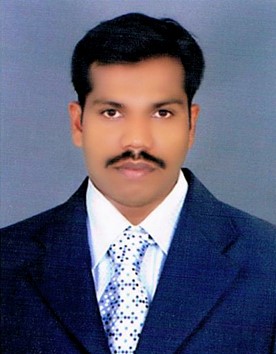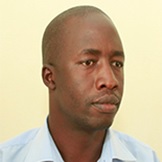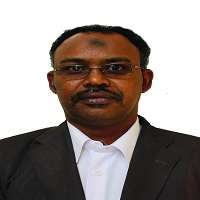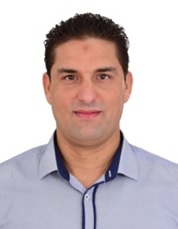Latest Articles
ABSTRACT
Girish Karnad’s Naga-Mandala creates a dream-reality as a playwright in search of a story comes across the life and dreams of Rani, an adolescent girl who gets wedded off to a man whose has no love for her. Her life gets its fulfilment as a Naga falls in her love and becomes one with her as Karnad explores the tradition of folklore whereby Cobras could take the human form and become humans. Through a powerful set of actions Rani becomes a wife and mother and matures into becoming a complete woman. The paper studies the journey of Rani from a young girl to woman through the participation of three males, her husband, the lover and Kappanna, another young man who plays a functional role in working out her liberty. These three males form one self as they evolve and grow into one image becoming facets of one male visage, the three-tier structure of Freud’s mind or consciousness.
Original Research Article
ABSTRACT
This research analyzes the role of Yoruba traditional leaders in Oyo State, Nigeria, in fostering democratic processes. Despite the modern democratic framework, these traditional institutions remain a vital part of the socio-political fabric. The Yoruba system, characterized by a structured hierarchy headed by the Alaafin of Oyo and the Oyomesi council, operates on principles of accountability and communal consultation. Using a qualitative approach based on secondary sources, this study explores how these leaders contribute to democracy. They act as stabilizers by resolving conflicts, providing civic education, and mediating between the state and local communities. Their grassroots legitimacy allows them to bridge a critical gap, fostering social cohesion and enhancing the local acceptance of governmental policies. However, their potential is constrained by significant challenges, including a lack of formal constitutional recognition and the risk of political interference, which can compromise their neutrality. Nonetheless, the research concludes that the functions of traditional rulers promoting participation, accountability, and transparency are inherently complementary to democratic ideals. Effectively integrating these indigenous governance structures into the national democratic framework offers a viable path to strengthening governance, promoting peace, and deepening citizen engagement in Nigeria.
Original Research Article
ABSTRACT
In the implementation of natural disaster management operations, one of the primary considerations is the process of distributing logistical aid to disaster-struck locations. For logistics management to be beneficial and in accordance with needs, standardization of disaster management logistics is necessary. One of the natural disaster management operations involving Air Squadron 32 was the response to the 2019 Lombok earthquake. In the logistics distribution process, Air Squadron 32 still encountered various problems and obstacles related to the implementation of BNPB Regulation Number 23 of 2014 concerning the Standardization of Disaster Management Logistics. The problem phenomenon that emerged was the weather factor, which could hamper the flight of the C-130 aircraft, resulting in a longer distribution time. The purpose of this study is 1) To describe and analyze the implementation of the BNPB Regulation Number 23 of 2014 concerning Standardization of Disaster Management Logistics in the distribution of logistics for the Lombok Island Earthquake Disaster in the Air Squadron 32 area. 2) To describe and analyze the obstacles and supporters in the implementation of the BNPB Regulation Number 23 of 2014 concerning Standardization of Disaster Management Logistics in the distribution of logistics for the Lombok Island Earthquake Disaster in the Air Squadron 32 area. The data analysis technique uses three components, namely 1) reducing data by summarizing or selecting the main points from the data obtained, 2) the reduced data is then presented in the form of a brief description, and 3) after presenting the data, the author concludes. To test the validity of the data, the author employs triangulation by using different data collection techniques to obtain data from the same source.
ABSTRACT
This study examines the transition from silence to public speech in the context of breast cancer in Côte d’Ivoire, analysing the mechanisms of destigmatisation and the dynamics of collective meaning-making. The central issue concerns the social and cultural regulation of women’s discourse and its impact on the visibility and social representation of illness. The research interrogates the collective and symbolic strategies through which women negotiate their identities, recalibrate the boundaries between the intimate and the public sphere, and transform the social gaze directed at their embodied experiences. Grounded in a qualitative methodology combining narrative interviews and direct observation, the analysis reveals that the discursive articulation of the intimate catalyses solidarity, self-affirmation, and bodily reappropriation. The discussion highlights the constitutive tension between stigmatisation, female subjectivation, and self-determination, demonstrating how collective speech operates as a vector of symbolic emancipation and identity reconfiguration. In conclusion, shared narration emerges as a lever for social transformation, simultaneously producing new forms of visibility and recognition for women confronting illness.
Original Research Article
ABSTRACT
Today, the issue of HIV/AIDS remains of pressing concern. With one of the highest prevalence rates in West Africa, Côte d’Ivoire ranks among the countries most severely affected by the HIV/AIDS pandemic. This study seeks to analyse the sexual practices and risk behaviours associated with HIV/AIDS among young people working and living in the Abobo scrapyard. The research is based on a mixed-methods design, combining questionnaire surveys and semi-structured interviews conducted with two hundred and nine (209) participants, including one hundred and thirty-two (132) men and seventy-seven (77) women. The findings reveal multiple risk behaviours likely to increase the exposure of young people in the scrapyard environment to HIV infection. Sexual inexperience coupled with heightened curiosity emerges as a major factor in the propagation of the virus. Although the condom is recognised as the most effective means of protection against HIV/AIDS, the study shows that its use is predominantly motivated by the fear of unintended pregnancy rather than by concern for disease prevention. Moreover, a considerable number of respondents perceive HIV/AIDS as a mere illusion or social construct. Qualitative interviews further indicate that commercial sex work is a widespread and structured activity within the Abobo scrapyard, thereby reinforcing the context of vulnerability and risk.
Original Research Article
ABSTRACT
This study investigates the continuity of Romanian culture through its central pillars: language, folklore, spirituality, and artistic expression. It argues that Romanian national identity is not static but an evolving and adaptive system that has persisted through political change, foreign influence, and globalization. Drawing on verified data from UNESCO’s Intangible Cultural Heritage lists, the Romanian Ministry of Culture’s national digitization initiatives (RO-CULTURA Programme, 2023–2026), Europeana’s country report on Romania (2025), and institutional archives, the research analyzes how traditional and modern mechanisms sustain cultural resilience. Using a qualitative, historical-analytical approach combined with digital ethnography, the study examines how linguistic unity, folk traditions, spirituality, and digital innovation reinforce cultural identity. Findings show that the Romanian language remains the unifying foundation of national consciousness; traditional customs such as Călușul, Doina, Horezu ceramics, and Mărțișor (recognized by UNESCO) have adapted to modern life and digital representation; and Eastern Orthodoxy continues to function as a moral and aesthetic anchor of Romanian society. The growing role of digital preservation, through platforms such as Europeana and the Ministry of Culture’s e-Heritage portal, demonstrates that technology now serves as an instrument of continuity rather than disruption. The study concludes that Romania’s cultural resilience results from the interaction between linguistic heritage, traditional creativity, spiritual revival, and digital innovation. This synthesis of ancient and modern elements offers a sustainable model for safeguarding intangible cultural heritage in the digital age and contributes to UNESCO’s broader objectives of preserving cultural diversity worldwide.
ABSTRACT
Mental health is increasingly recognized as a foundational element shaping the growth trajectories of African youth and influencing broader continental socioeconomic outcomes. Given that over 60% of many African nations’ populations are aged 15 to 24, the prevalence of mental disorders particularly depression and anxiety poses profound challenges to individual potential and collective development. This article synthesizes recent empirical evidence demonstrating the extent of mental health challenges among African youth, articulates their multifaceted impacts on education, employment, and social integration, and situates these within systemic barriers such as under-investment, cultural stigma, and policy neglect. The analysis further explores emerging regional initiatives and evidence based intervention models that advance pathways to resilience and productivity. Recommendations emphasize integrated policy frameworks, sustained resource allocation, and culturally responsive strategies to harness Africa’s demographic dividend sustainably.


















